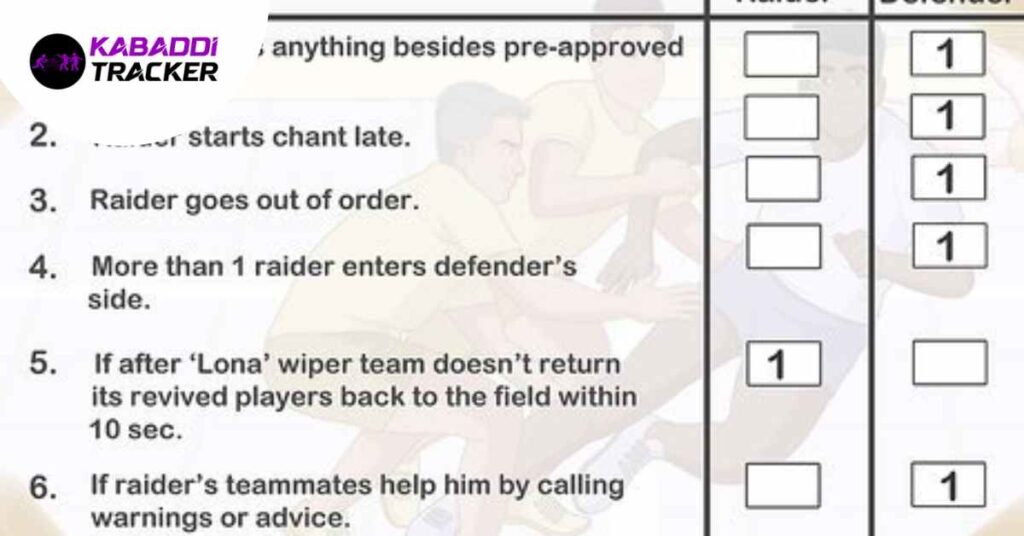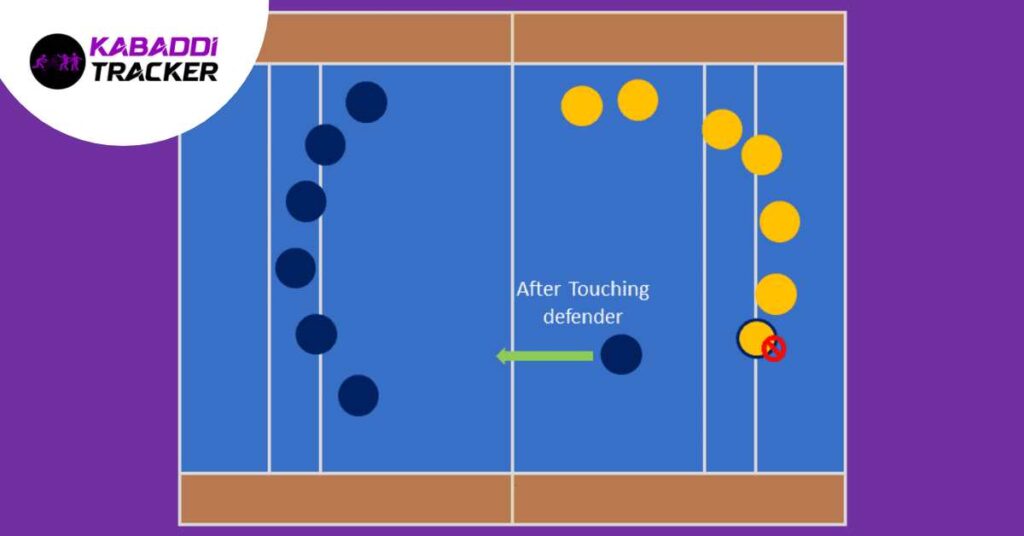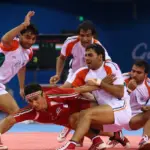Kabaddi, an ancient sport originating in South Asia, has transcended cultural boundaries to become a global sensation. Known for its intense gameplay and passionate spirit, kabaddi has retained its traditional core while embracing modern adaptations, rule changes, player roles, and court specifications.
This article delves into the concept of a unified kabaddi ground that incorporates regional styles, explores recent rule modifications, provides insights into player positions and roles, and examines the dimensions that define the kabaddi court.
Top 10 Kabaddi Rules
Unity in Diversity : Kabaddi Grounds
Kabaddi’s cultural significance lies in its deep connection to local traditions. The emergence of distinct regional styles has enriched the sport’s legacy. A “unified kabaddi ground” concept signifies the convergence of these diverse approaches.
It showcases a platform that harmoniously blends various techniques, fostering inclusivity and diversity within kabaddi. This concept enables players to bring their unique skills to the forefront while celebrating the rich tapestry of kabaddi’s cultural heritage.
What is the Kabaddi player’s position name

- Raider: The raider is the primary offensive player who enters the opponent’s half of the court to tag defenders and return to their own half. The goal of the raider is to score points by tagging opponents while avoiding being tackled. Raiders need to be quick, agile, and have good evasion skills.
- All-Rounder: An all-rounder is a versatile player who can both raid and defend effectively. They are expected to contribute in both offensive and defensive situations, making them a valuable asset to the team. All-rounders need to possess a well-rounded skill set, including raiding, defending, and tactical awareness.
- Defender (Left Corner): The left corner defender is responsible for preventing raiders from the opposing team from entering their territory. They use their strength, anticipation, and blocking skills to stop raiders in their tracks and prevent them from returning safely to their side.
- Defender (Left Cover): The left cover defender works in conjunction with the left corner to form a defensive duo on the left side of the court. They assist in blocking raiders and covering any gaps that the left corner might leave. Communication and coordination between the left corner and left cover are crucial.
- Defender (Center): The center defender, also known as the center cover, occupies a pivotal role in the defense. They guard the center of the court and collaborate with other defenders to stop raiders. The center defender often acts as the anchor of the defense, coordinating movements and directing teammates.
- Defender (Right Cover): Similar to the left cover, the right cover defender supports the right corner in defense. They collaborate to create a strong defensive line on the right side of the court, ensuring raiders have limited opportunities to score points.
- Defender (Right Corner): The right corner defender mirrors the responsibilities of the left corner but on the right side of the court. They aim to prevent raiders from the opposing team from entering their territory, using their agility, timing, and blocking skills.
The Roots of Diversity
Kabaddi’s origins can be traced back centuries, evolving differently in various regions of South Asia. From the rugged fields of Punjab to the sandy courts of Tamil Nadu, distinct regional styles emerged, each characterized by its unique strategies, techniques, and cultural nuances. These styles are a testament to the deep connection between kabaddi and the diverse communities that have nurtured it.
Also Read – What is Do or Die Raid in Pro Kabaddi
The Unifying Thread
In a world where boundaries are fading and cultural exchange is the norm, the idea of a “National Style Kabaddi” gains significance. It encapsulates the concept of celebrating diversity while fostering unity. This modern interpretation of the sport harmonizes these regional styles into a cohesive and inclusive whole, representing not just individual communities, but an entire region’s heritage.
Embracing the Diverse Tactics
National Style Kabaddi brings together a treasure trove of techniques from various styles. The strategic raiding strategies of Punjab, the agile footwork of Maharashtra, and the swift movements of Karnataka – all these elements blend into a dynamic and captivating experience. The diverse tactics are a testament to the resilience and adaptability of kabaddi, a sport that is constantly evolving without losing its essence.
The Spectacle of Inclusivity
One of the remarkable aspects of kabaddi is its ability to resonate with people from different walks of life. By embracing a National Style, the sport expands its reach, inviting players and fans of all backgrounds to partake in the excitement. This inclusivity not only elevates the sport but also strengthens the sense of unity among diverse communities.
A Global Identity
As kabaddi continues to break barriers and find fans across the globe, the concept of a National Style serves as a bridge between its historical roots and its modern identity. It brings a sense of familiarity to enthusiasts while inviting newcomers to explore the richness of the sport. This adaptability is what allows kabaddi to transcend linguistic and cultural boundaries.
Modernizing Through Rule Changes
As kabaddi gains international attention, strategic rule adjustments have enhanced its competitiveness and appeal. These changes inject dynamism, increasing the pace, depth, and excitement of the game.
Also Read – What are the Top 10 main rules of Kabaddi
The introduction of bonus points for successful unopposed raids and the “Do-or-Die” raid rule has intensified the game’s strategic aspects. Additionally, reviving raiders offers teams another offensive opportunity, creating a balance between attackers and defenders. These rule innovations keep audiences engaged by introducing new layers of suspense and excitement.
Roles and Positions of Kabaddi Players
A kabaddi team’s foundation lies in its seven players, each fulfilling distinct roles vital to team success. Raiders, typically leading the offensive charge, infiltrate rival territory to tag opponents and return safely to their side, accumulating points. Successful raiders showcase agility and strategic prowess, outwitting defenders with their skills.
On the other hand, stoppers play a defensive role by obstructing raiders and preventing their return. This strategic dichotomy between offense and defense shapes Kabaddi’s complexity and teamwork dynamics.
Kabaddi Court Dimensions

The kabaddi court serves as the canvas for the sport’s intensity. Although dimensions can slightly vary, a standard kabaddi court measures approximately 13 meters by 10 meters for men’s matches and 11 meters by 8 meters for women’s matches. Divided into halves, each team has its territory, separated by the centerline and the baulk line, which guides raiders during their attempts.
These compact dimensions amplify the sport’s physicality, agility, and strategic gameplay, creating an environment where players must navigate tight spaces and quick decisions.
Kabaddi’s evolution from a local pastime to a global phenomenon showcases its timeless appeal and adaptability. The concept of a unified kabaddi ground bridges regional styles, encouraging diversity and inclusivity within the sport. Rule changes invigorate the game, providing strategic depth and suspense that engage audiences worldwide.
Understanding player positions offers insights into the sport’s strategy, while court dimensions underscore kabaddi’s intensity. As kabaddi continues to evolve, it honors tradition while embracing innovation, reminding us that its legacy is as captivating and vibrant as ever.





